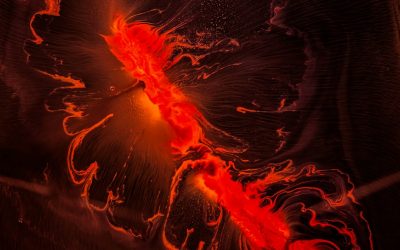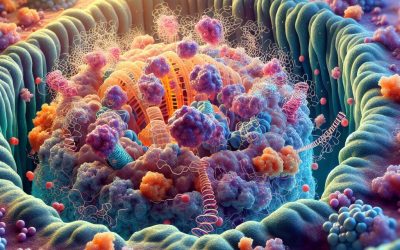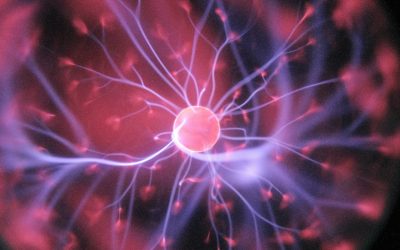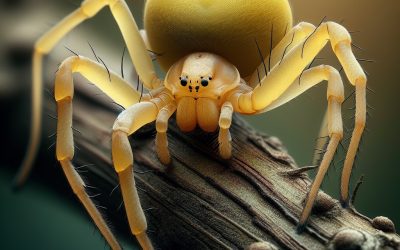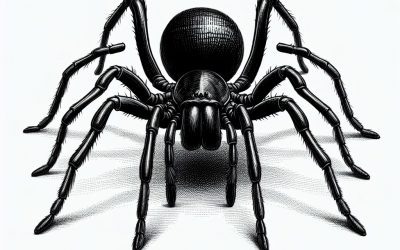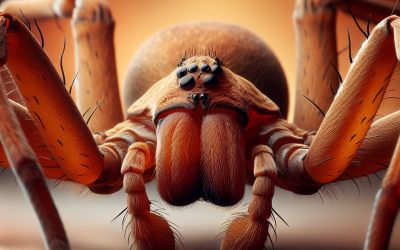Biology (from the Latin ‘bios’ meaning life and ‘logia’ meaning study of) is the study of all organisms and all aspects of their life-cycles.
Biology
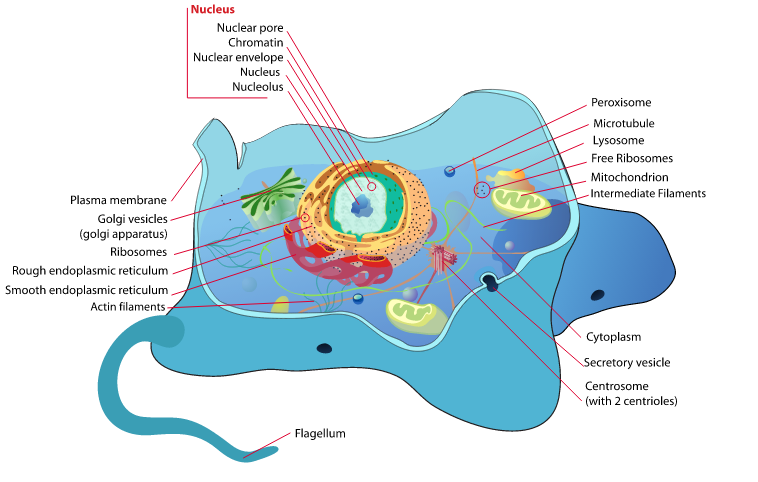
Biology (from the Latin ‘bios’ meaning life and ‘logia’ meaning study of) is the study of all organisms and all aspects of their life-cycles. The subject of Biology, as we know it today, was born in the nineteenth century along with physics, chemistry and the scientific method. Before then ‘Natural Philosophy’ which was the study of nature and the physical universe, included biology, chemistry and physics.
Natural Philosophy The study of our natural world is known to date back to the time of Mesopotamia around 3,100 BC but as this was the beginning of written historic record the study probably existed long before this time. Modern Biology The first great development of modern biology came from Charles Darwin, who is often referred to as the father of modern biology. Although known for his work ‘On the Origin of Species’ (published in 1859), Darwin produced nineteen additional publications, wrote hundreds of scientific papers and fourteen thousand letters, all of which laid the foundations for Biology as a subject we recognise today. Although he did not invent the theory of evolution, he certainly made the idea more accessible to the world. His theory was evolution by natural selection; where by an organism with a mutation may be better adapted to certain environmental changes and therefore improve their chance of survival. This means the organism with the useful mutation is more likely to survive, reproduce and hopefully pass on the useful mutation. Overtime species are able to adapt to the world around them and this process gave the Galapagos Islands (and the world) the rich diversity of its inhabitants. Deoxyribonucleic acid or DNA was first discovered in 1869 but its role was not known at the time. It was in 1943 that it was discovered that it is DNA that is responsible for programming the genetic makeup of organisms and passing on the mutations Darwin had discovered. This new understanding of how amino acids are programmed on a cellular level to make up various parts of the organism was a huge leap forward but new profound discoveries are being made everyday in the field of biology.
The Fascinating World of Bacteria Cells: Exploring the Microscopic Organisms that Rule our Planet
Bacteria are single-celled microorganisms that are found in every corner of the Earth. They are among the oldest forms of life on our planet and have played a crucial role in shaping the world as we know it today. Bacteria are incredibly diverse and can be found in a wide range of environments, from the depths of the ocean to the soil in our backyard. Despite their small size, bacteria have a significant impact on various fields, including medicine, agriculture, and biotechnology. In medicine, bacteria play a crucial role in the development of antibiotics and vaccines. They also help us understand how diseases spread and how our immune system responds to infections. In agriculture, bacteria are used to improve soil fertility, promote plant growth, and control pests. In biotechnology, bacteria are used to produce a wide range of products, including enzymes, biofuels, and pharmaceuticals. Key Takeaways Bacteria are microscopic organisms that play a crucial role in shaping our world. The discovery and research of bacteria has a long and fascinating history. Bacteria cells have unique characteristics, including a cell wall and various structures for movement and reproduction. Bacteria generate energy and nutrients through various metabolic processes. Bacteria can have both positive and negative effects on human health, and there is a vast diversity of microbial life on Earth. The History of Bacteria: From Discovery to Modern-Day Research The discovery of bacteria can be traced back to the 17th century when Antonie van Leeuwenhoek first observed these microscopic organisms under a microscope. However, it wasn’t until the late 19th century that scientists began to understand the true nature of bacteria...
The Fascinating World of Prokaryotic Cells: Exploring the Smallest Living Organisms
Prokaryotic cells are a type of cell that lacks a nucleus and other membrane-bound organelles. They are found in bacteria and archaea, two domains of life that are distinct from eukaryotes. In contrast, eukaryotic cells have a nucleus and other membrane-bound organelles. The study of prokaryotic cells is important because they are the most abundant and diverse organisms on Earth, playing crucial roles in various ecological processes. Prokaryotic cells are characterized by their simplicity compared to eukaryotic cells. They lack a nucleus, which means that their DNA is not enclosed within a membrane-bound compartment. Instead, the DNA is located in the cytoplasm, along with other cellular components. Prokaryotic cells also lack membrane-bound organelles such as mitochondria and chloroplasts, which are present in eukaryotic cells. Studying prokaryotic cells is important because they are the building blocks of life on Earth. They are found in every habitat imaginable, from deep-sea hydrothermal vents to the human gut. Prokaryotes play crucial roles in nutrient cycling, decomposition, and symbiotic relationships with other organisms. Understanding their biology and ecology can provide insights into how ecosystems function and how they can be managed and conserved. Key Takeaways Prokaryotic cells are different from eukaryotic cells in terms of their size, structure, and lack of membrane-bound organelles. Prokaryotic cells are diverse and include bacteria, archaea, and other microorganisms. The anatomy of prokaryotic cells includes a cell wall, plasma membrane, cytoplasm, and genetic material in the form of a single circular chromosome. Prokaryotic cells play important roles in the environment, including decomposition and nitrogen fixation. Some prokaryotic cells can cause disease in humans, such as pathogenic bacteria like E....
Exploring the Fascinating World of Cells: An Overview of the Different Types
Cells are the basic building blocks of life. They are the smallest unit of life that can replicate independently, and they are found in all living organisms. Cells are incredibly important because they carry out all the necessary functions for an organism to survive and thrive. They are responsible for processes such as growth, reproduction, and metabolism. Without cells, life as we know it would not exist. Key Takeaways Cells are the basic unit of life and are essential for all living organisms. Prokaryotic cells lack a nucleus and other membrane-bound organelles, while eukaryotic cells have these structures. Cells are made up of various organelles that perform specific functions, such as the mitochondria for energy production. There are many different types of cells in the human body, including blood cells, bone cells, and nerve cells. Cells can contribute to disease, but research on cells is also revolutionizing healthcare and medicine. Understanding the Different Types of Cells: Prokaryotic vs Eukaryotic Cells There are two main types of cells: prokaryotic and eukaryotic cells. Prokaryotic cells are simpler in structure and do not have a nucleus or membrane-bound organelles. They are typically found in bacteria and archaea. On the other hand, eukaryotic cells are more complex and have a nucleus and membrane-bound organelles. They are found in plants, animals, fungi, and protists. The main difference between prokaryotic and eukaryotic cells lies in their structure and organization. Prokaryotic cells have a single circular chromosome, while eukaryotic cells have multiple linear chromosomes. Prokaryotic cells also lack membrane-bound organelles such as mitochondria, endoplasmic reticulum, and Golgi apparatus, which are present in eukaryotic cells. The Building...
The Mighty Ribosomes: The Protein Factories of our Cells
Ribosomes are essential cellular structures that play a crucial role in protein synthesis. They are often referred to as the “protein factories” of our cells. Ribosomes are found in all living organisms, from bacteria to humans, and are responsible for translating the genetic information stored in DNA into functional proteins. Without ribosomes, life as we know it would not be possible. Key Takeaways Ribosomes are the protein factories of our cells, responsible for synthesizing all the proteins needed for life. Ribosomes are complex molecular machines made up of RNA and proteins, with a large and small subunit that work together to read and translate genetic information. Ribosome assembly is a complex process that involves many different proteins and RNA molecules, and can be disrupted by mutations or environmental stressors. Ribosomes play a crucial role in protein synthesis, ensuring that the correct amino acids are added to the growing protein chain in the correct order. Ribosomes work together with genes to regulate gene expression, and can be targeted by antibiotics to treat bacterial infections. The Structure of Ribosomes: A Molecular Machine Ribosomes are complex molecular machines composed of both RNA and proteins. They consist of two subunits, a large subunit and a small subunit, which come together during protein synthesis. The large subunit is responsible for catalyzing the formation of peptide bonds between amino acids, while the small subunit helps to position the mRNA and tRNA molecules during translation. The structure of ribosomes is highly conserved across all organisms, indicating its importance in cellular processes. The core of the ribosome is made up of ribosomal RNA (rRNA), which forms a...
Exploring the Wonders of the Plasma Membrane: The Gatekeeper of Life
The plasma membrane, also known as the cell membrane, is a vital component of all living cells. It is a thin, flexible barrier that surrounds the cell and separates its internal environment from the external environment. The plasma membrane plays a crucial role in cell biology as it controls what goes in and out of the cell, allowing for the maintenance of cellular homeostasis. Key Takeaways The plasma membrane is a vital component of all cells, controlling what goes in and out of the cell. The plasma membrane is made up of various components, including lipids and proteins, arranged in a fluid mosaic model. Transport across the plasma membrane can occur through passive or active processes. Membrane proteins play a crucial role in cellular communication and signaling. External factors such as temperature, pH, and pressure can impact the integrity of the plasma membrane. The Structure of the Plasma Membrane: A Closer Look at its Components The plasma membrane is composed of several components that work together to maintain its structure and function. The main component of the plasma membrane is the phospholipid bilayer, which consists of two layers of phospholipids arranged with their hydrophilic heads facing outward and their hydrophobic tails facing inward. This arrangement creates a barrier that prevents water-soluble substances from freely crossing the membrane. In addition to phospholipids, the plasma membrane also contains membrane proteins. These proteins are embedded within the phospholipid bilayer and serve various functions, such as transporting molecules across the membrane, acting as receptors for signaling molecules, and providing structural support to the cell. Another important component of the plasma membrane is cholesterol....
The Intricate World of Cytoplasm: Exploring the Vitality of Cells
Cytoplasm is the gel-like substance that fills the interior of cells. It is a vital component of all living cells and plays a crucial role in their functioning. The term “cytoplasm” comes from the Greek words “kytos,” meaning “container,” and “plasma,” meaning “formed substance.” It was first coined by Rudolf Virchow in 1855. The cytoplasm is essential for various cellular processes, including metabolism, energy production, and transport of molecules. It provides a medium for chemical reactions to occur and supports the structure and shape of the cell. Without cytoplasm, cells would not be able to carry out their functions and would cease to exist. Key Takeaways Cytoplasm is the living substance of cells that plays a crucial role in cell metabolism and energy production. The cytoplasm is composed of various organelles that work together to maintain cellular functions. Cytoplasmic streaming is an important process that helps in the movement of molecules within cells. Cytoplasmic changes can have a significant impact on cellular health and disease. Advancements in cytoplasmic research can lead to new innovations and discoveries in the field of cell biology. Understanding the Composition and Structure of Cytoplasm The cytoplasm is composed of various components, including water, proteins, lipids, carbohydrates, ions, and organelles. Water makes up the majority of the cytoplasm’s composition, accounting for about 70-80% of its volume. Proteins are also abundant in the cytoplasm and are involved in various cellular processes. The structure of the cytoplasm is complex and dynamic. It consists of a network of filaments called the cytoskeleton, which provides structural support to the cell and helps maintain its shape. The cytoskeleton is made...
Comparing Prokaryotic and Eukaryotic Cells: Common Characteristics of All Cells
Comparing Prokaryotic and Eukaryotic Cells: Understanding Cell Structure and What Cells Have in Common All living organisms, from the simplest bacterium to complex human beings, are made up of cells. But not all cells are the same. This article explores the fascinating differences and similarities between prokaryotic and eukaryotic cells, which form the foundation of all life. Whether you’re studying biology, curious about how life works, or just love science, understanding cell structure helps explain everything from disease mechanisms to the evolution of life on Earth. Article Outline What Is a Cell and Why Is It Important? What Is a Prokaryotic Cell? What Is a Eukaryotic Cell? How Do Prokaryotic and Eukaryotic Cells Differ in Size? What Roles Do the Cell Membrane and Cytoplasm Play? Do All Cells Contain a Nucleus? How Do Cells Synthesise Proteins? What Organelles Are Found in Eukaryotic Cells? How Do Plant and Animal Cells Compare? What Do Prokaryotic and Eukaryotic Cells Have in Common? What Is a Cell and Why Is It Important? The cell is the basic unit of life. According to the cell theory, all living organisms are composed of one or more cells, the cell is the basic unit of life, and all cells arise from pre-existing cells. Every cell carries out essential life functions, such as energy conversion, reproduction, and response to stimuli. The study of cells, or cell biology, is fundamental to understanding both the simple life forms like bacteria and archaea and complex multicellular organisms like humans. What Is a Prokaryotic Cell? A prokaryotic cell is one of two broad categories of cell types. These are unicellular organisms...
The Silent Hunter: Learning About the Sac Spider (Cheiracanthium spp.)
The Cheiracanthium spp., commonly known as the sac spider, is a fascinating and often misunderstood creature. Belonging to the family Eutichuridae, this spider is found in various parts of the world, including North America, Europe, and Asia. With over 100 species within the genus Cheiracanthium, these spiders play an important role in the ecosystem. Understanding their behavior and characteristics is crucial for both researchers and the general public. Key Takeaways The Sac Spider, also known as the Silent Hunter, is a venomous spider found in many parts of the world. Physical characteristics of the Cheiracanthium spp. include a yellowish-brown color, long legs, and a distinctive sac-like structure for carrying eggs. The Sac Spider prefers to live in warm, dry environments such as deserts, grasslands, and forests. The Silent Hunter feeds on insects and other spiders, using its venom to immobilize prey. A bite from the Cheiracanthium spp. can cause symptoms such as pain, swelling, and redness, but is rarely life-threatening. Prevention and control measures for the Sac Spider include keeping homes and outdoor areas clean and free of clutter. Misconceptions and myths about the Cheiracanthium spp. include the belief that its venom is deadly to humans. The Silent Hunter plays an important role in controlling insect populations in its ecosystem. Research and conservation efforts for the Sac Spider are ongoing, with a focus on understanding its behavior and venom properties. Physical Characteristics of the Cheiracanthium spp. The sac spider is relatively small in size, with adults measuring around 6 to 10 millimeters in length. They have a pale yellow or light brown body with darker markings on their abdomen....
The Six-eyed Sand Spider: Facts and Myths Unveiled
The Six-eyed Sand Spider, also known as Sicarius hahni, is a fascinating and enigmatic species of spider that is found in the deserts of southern Africa. This spider is known for its unique appearance and venomous bite, making it a subject of interest for scientists and arachnologists. Understanding the Six-eyed Sand Spider is important not only for studying its biology and behavior, but also for dispelling myths and misconceptions surrounding this intriguing creature. Key Takeaways The Six-eyed Sand Spider is a venomous spider found in deserts of southern Africa. It has unique physical characteristics such as six eyes and a flattened body. The spider is found in sandy habitats and has a limited distribution range. The venom of the Six-eyed Sand Spider is potent and can cause severe symptoms in humans. Despite popular myths, the spider is not as lethal as commonly believed and plays an important role in the ecosystem. Physical Characteristics of the Six-eyed Sand Spider The Six-eyed Sand Spider is a medium-sized spider, with females reaching a body length of about 1.5 centimeters and males being slightly smaller. One of its most distinctive features is its six eyes, arranged in three pairs on the front of its head. This is unusual among spiders, as most species have eight eyes. The spider’s body is flattened and oval-shaped, with a sandy brown color that helps it blend in with its desert environment. In terms of physical appearance, the Six-eyed Sand Spider can be compared to other spider species such as the Brown Recluse Spider (Loxosceles reclusa) and the Black Widow Spider (Latrodectus mactans). While all three spiders have...
The Enigmatic Mouse Spider: Discovering the Fascinating World of Missulena spp.
The mouse spider (Missulena spp.) is a fascinating and enigmatic species of spider that is native to Australia. It belongs to the family Actinopodidae, which also includes the trapdoor spiders. The mouse spider is known for its unique physical characteristics, venomous bite, and elusive nature. Despite its name, the mouse spider does not prey on mice but instead feeds on insects and other small invertebrates. The mouse spider is considered enigmatic due to its elusive behavior and limited research conducted on the species. It is often mistaken for other spider species, such as the funnel-web spider, due to its similar appearance and venomous bite. The lack of comprehensive studies on the mouse spider has led to a limited understanding of its biology, behavior, and ecological role. However, recent research efforts have shed some light on this mysterious arachnid. Key Takeaways The Mouse Spider is a mysterious and enigmatic species that is native to Australia. Missulena spp. have distinct physical characteristics, including a stocky body, short legs, and a glossy black or dark brown color. Mouse Spiders can be found in various habitats across Australia, including forests, grasslands, and deserts. The venom of the Mouse Spider can be dangerous to humans and has potential medical importance. Missulena spp. are carnivorous and feed on a variety of prey, including insects, spiders, and small vertebrates. The Physical Characteristics of Missulena spp.: A Closer Look The mouse spider is a medium-sized spider with a body length ranging from 1 to 3 centimeters. It has a robust and compact body shape, with a glossy black or dark brown exoskeleton. The abdomen is spherical in...
Surviving a Brown Recluse Spider Bite: What You Need to Know
The brown recluse spider, scientifically known as Loxosceles reclusa, is a venomous spider that is found primarily in the United States. While it is not aggressive and typically avoids human contact, its bite can be dangerous and potentially life-threatening. In this article, we will explore the characteristics of the brown recluse spider, how to identify its bite, common symptoms, and the importance of seeking immediate medical attention. We will also discuss home treatment options, cleaning and disinfecting the bite area, coping with pain and swelling, potential complications, prevention tips, and what to do if you encounter a brown recluse spider. Key Takeaways Brown recluse spiders are venomous and can be found in certain regions of the United States. Identifying a brown recluse spider bite can be difficult, but it typically appears as a red or purple blister with a white or yellow center. Common symptoms of a brown recluse spider bite include pain, itching, fever, and nausea. Seeking immediate medical attention is crucial if you suspect you have been bitten by a brown recluse spider. While there are home remedies for treating a brown recluse spider bite, it is important to consult with a healthcare professional first. Understanding the Brown Recluse Spider The brown recluse spider is a small spider that measures about 6 to 20 millimeters in length. It has a characteristic violin-shaped marking on its cephalothorax, which is the part of its body where the legs are attached. This marking gives it the nickname “fiddleback spider.” The color of the spider can vary from light tan to dark brown. It has six eyes arranged in pairs, unlike...
The Deadly Beauty: Unveiling the Secrets of the Black Widow Spider (Latrodectus spp.)
The black widow spider is a well-known and feared arachnid that belongs to the genus Latrodectus. It is one of the most venomous spiders in the world, and its bite can be potentially dangerous to humans. Understanding this species is important for both scientific research and public safety. Key Takeaways The Black Widow Spider is a venomous arachnid found in North and South America. It is identified by its shiny black body and red hourglass-shaped marking on its abdomen. Black Widow Spiders prefer warm, dry habitats such as deserts, forests, and urban areas. Their venom contains neurotoxins that can cause muscle pain, cramps, and in severe cases, paralysis and death. Female Black Widow Spiders are known for their cannibalistic behavior and can lay up to 900 eggs in a single sac. Physical Characteristics of the Black Widow Spider The black widow spider is easily recognizable by its shiny black body and distinctive red hourglass-shaped marking on its abdomen. The female black widow is larger than the male, measuring about 1.5 inches in length, while the male is only about half that size. The female’s body is also more robust, while the male has longer legs. Distribution and Habitat of the Black Widow Spider Black widow spiders are found in various parts of the world, including North America, Europe, Africa, and Asia. In North America, they are most commonly found in the southern and western regions. These spiders prefer warm climates and are often found in dark, secluded areas such as woodpiles, sheds, and outdoor toilets. Venom of the Black Widow Spider and Its Effects on Humans Category Data/Metrics Spider...

